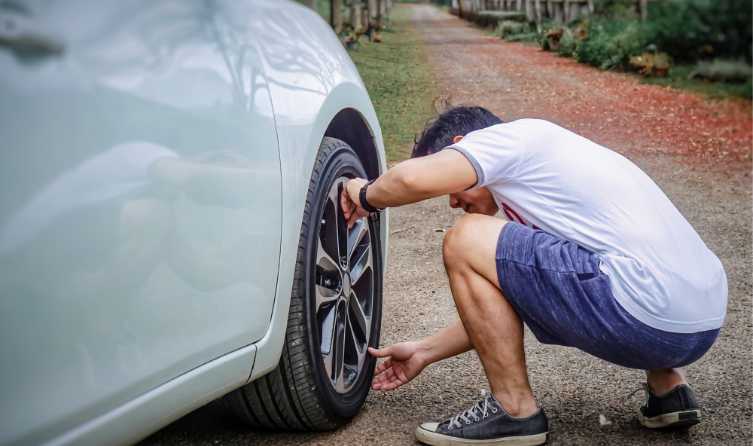
By: Annette Hynes | Economical Insurance
December 16, 2021
While most tire manufacturers recommend buying new tires for your car every five to six years, there are several telltale signs that you may need to replace them sooner. You should have your tires inspected by a professional once a year — but in between those annual inspections, you can check your own tires for these common signs that they might need to be replaced:
- The tread is worn down. A tire’s tread is the rubber that creates friction between the tire and the road to grip the road and keep you moving in the direction you want to go. The tread is also lined with grooves to channel water through the tire to help you avoid hydroplaning. A new tire’s average tread depth is between eight and nine millimetres, but the tread wears down gradually as you drive. In Canada, the legal minimum tread depth limit is 1.6 millimetres. To easily determine if a tire’s tread is too low, grab a quarter and place it one of the grooves, with the top of the Queen’s head pointing inwards towards the tire. If the top of the Queen’s head is entirely visible, the tread has likely worn down too far to safely grip the road.
- There are bubbles in the side of your tire. A round bubble in the sidewall of your tire can be caused by a variety of common, high-impact incidents like hitting a pothole, running into a curb, or driving quickly over train tracks. While they may look innocent enough, these bubbles are incredibly dangerous — they’re a sign that air is leaking into the outer layers of your tire, which can cause the tire to explode while you’re driving. If you notice a bubble in your tire, replace the tire immediately.
- There are cuts or cracks in the tire. Over time, the rubber in your tires will naturally degrade — even if they’re not always in use — leading to cracks along the tire’s tread and along the sidewall. Typically, cracking is caused by UV exposure, excessive heat, and from tires being left outside. When driving, you could also run over a rock or sharp object that cuts one of your tires. The longer a tire is left with cuts and cracks, the more likely you are to experience a tire blowout.
- You discover something lodged in the tire. If you discover a foreign object like a nail lodged in your tire, you need to address the issue immediately — even if the hole isn’t causing air to leak out.
- You notice unusual wear patterns. When inspecting your tires, you may notice unusual wear patterns along the edges of the tread, down the middle of the tread, along the inside or the outside of the tire, or in uneven patches along the tread. These patterns could be caused by wheel misalignment, improper inflation, the need for tire rotation, or a combination of all of the above.
- Your steering wheel is vibrating while you drive. If your tires’ tread has worn down unevenly, you may feel a vibration in your steering wheel when you’re driving. However, don’t immediately buy a new set of wheels. Instead, bring your car to a local automotive professional to confirm your tires are the culprit and that the steering wheel vibration isn’t being caused by an unrelated issue.
Sometimes an accident happens, even when you’ve done your best to prevent it. Reach out to your Whitley Newman Insurance representative if you have questions on how your car insurance policy would respond in the event of a tire blowout-related collision.
The content in this article is for information purposes only and is not intended to be relied upon as professional or expert advice.
Learn more about vehicle insurance from Whitley Newman
This article was originally posted on
economical.com
